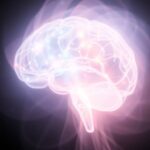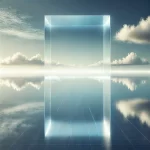Juggling Priorities and Spiritual Practice
I have been busy with several different priorities lately, so my study of resources in AtR has been slow, and I am still covering my bases in stage 1. Even though I am pretty sure I got the “I am” through several pointers and techniques I have already explored, I want to be diligent and thorough with checking all the resources in each stage.
“Who Am I?” self-enquiry technique from Ramana Maharshi was the most recent one I finished going over and mapping out. Conceptually, it’s very similar to Adyashanti’s, so in that regard, I think a lot of materials might be overlapping like that in these collections. I might change my approach in the future and start with the AtR guide itself for each of the stages initially to see if I understand everything there and will only use the additional resources if they are markedly different from the initial information. It still serves as a good opportunity to review the pointers and solidify one’s insights by going over similar information.
Diving into the “Who Am I?” Technique
This technique consists of direct and persistent questioning of the ego’s sense of self. It focuses on investigating the source of the “I” thought, ultimately aiming to dissolve the identification with the ego and reveal the true Self, which is beyond the mind and body. According to the teachings, as thoughts arise, the seeker should inquire, “To whom do they arise?” and return to the sense of “I.” The repetitive practice of this inquiry leads to the cessation of thoughts and a realization of the Self as pure awareness.
It states that other forms of meditation and pranayama should be used as auxiliary practices, but I was using the “Nan yar?” as an auxiliary practice to everything else I was doing. I was trying to employ it at any point I caught myself thinking, on and off the mat. It does require a good amount of focus and awareness to diligently apply it in the beginning. Like with any habit, it’s tough consciously doing it at first, but it does become easier with time.
Mechanism of Action
At first, I thought the technique worked as a koan since one of my favorite koans is structured very similarly, “What is this?” It stumps me every time. So, initially, I used the “Who am I?” in a similar way, and I honestly can’t tell the difference in effects. As soon as I ask the question, I enter the mode of waiting for the answer, which never comes.
“The mind should not be allowed to wander towards worldly objects and what concerns other people.”
Repeatedly doing this for several days, I noticed a kind of annoyance at the fact that I didn’t really have any chance to think. Every time I noticed myself thinking without a specific task-oriented purpose, I would employ the technique. Perhaps that was the ego’s reaction, as thoughts are one of its primary ways of shackling us to identify with it. I noticed a considerable reduction in discursive wandering thinking after starting to use the technique. However, a lot of it came back when I took a pause in the practice. I intend to resume practicing it, as I found that besides chipping away at its primary goal, it also helps with making sure I’m not spending energy on things I have no need to think about.
Unveiling the Sacred Awareness
This approach concentrates on highlighting the sacred and ever-present awareness as existence-consciousness-bliss, specifically as opposed to the world outside of ourselves. This part requires deeply peering through into one’s mind and awareness when practicing the self-enquiry. It is the part that Ken Wilber described as impossible to avoid but oh so easy to miss since it is already always there. By zeroing in on it like that, we reconcentrate it in our awareness and understanding, making it a primal mode of being from which everything else stems. It establishes this beingness and awareness as the sacred ground of being, which delivers happiness and enjoyment to us thanks to the simple recognition of its preciousness.
As the mind creates the thoughts, quiescence of the mind is the prerequisite for the world disappearing, leaving only the sacred Self remaining. It is the mind, with its thoughts, that constructs the world for us. When we quiet the mind and make the world-building disappear, it becomes a sort of dream that happens in the background. The Self becomes the star of the show at that point and can be fully enjoyed in its complete, timeless glory.
The one part that I found confusing is the explanation of the nature of the mind. The mind is described as a power residing in the Self, but it is also noted that the mind doesn’t exist apart from thoughts. So, thought is the nature of the mind, but it also is what produces thoughts. I am curious to understand why this mechanism is there in the Self in the first place. All these spiritual techniques remind me of some kind of hacking. I always return to the question, “Is everything supposed to be as it is without us taking it apart (in which case the spiritual path is a form of rebellion against the established order), or is the whole thing some kind of obstacle course that is supposed to test us until we are able to disassemble the illusion and get out of it?” Are we in some sort of spiritual escape room?
The Goal: Liberation from Ego
The end goal of the practice is cessation of identification with ego, which means one can live and act from that state where the true Self is the source of all. Sounds like enlightenment to me. This makes this method seem the most direct. No ifs or buts about it, I love it. But it does require a very strict commitment, to which I say, “Challenge accepted!”
“As thoughts arise they should be destroyed then and there in the very place of their origin, through inquiry.”
The Self is defined as Brahman, the ultimate reality in which everything resides, including the world, the individual soul, and even God. It is synonymous with silence, and its defining characteristic is specifically the absence of “I” thought. That last bit is a mind-boggling statement. What does it mean for “I” to be absent? What remains? The “I” seems like the centralization of awareness in one limited localized perspective point. If we move away from that to all possible vantage points as the connected infinite constellation of all, what do we get? Just everything happening. But then, is there anyone to cognize that happening as a united comprehension/cognition/experience? This makes it seem like the “I” is a fluke of evolution that wasn’t supposed to happen, or it’s an obstacle to a more evolved way of nature’s/universe’s being that we are simply a stepping stone for.
“Without desire, resolve, or effort, the sun rises; and in its mere presence, the sun-stone emits fire, the lotus blooms, water evaporates; people perform their various functions and then rest.”
“God has no resolve; no karma attaches itself to Him.”
It is as if just the performance of the designed function is all that is supposed to be happening. God then seems to be simply an already enlightened perfected being that does it all completely frictionless and karmaless. This very much seems to be the case, especially minding the following quote from the instruction explanations:
“Whatever burdens are thrown on God, He bears them.”
The Simplicity of the Direct Path
The reason this is the most direct way is because it eliminates all further contemplation and muddling of the waters that comes through thinking. This is almost paradoxical for me because I see this long winding path ahead with all the teachings and methods and practices to explore. But as with the dropping of the eternal search in Ken Wilber’s non-duality pointers, it seems almost too simple. So much so, it’s anxiety-inducing. Is it another trick of the ego that desires to prolong its existence and obscure the clear, direct way that pierces through to the ultimate reality in one swift motion? Love the power and clarity of this analogy:
“Just as one who wants to throw away garbage has no need to analyze it and see what it is, so one who wants to know the Self has no need to count the number of categories or inquire into their characteristics.”
There is a lot of emphasis on the power and priority of this practice. So much so that it is making me rethink my approach to the practice and my motivations for studying the teachings and even leading this blog. My challenge has always been the abundance of books and teachings out there. The only reliable way to understand what they are is to study them first-hand. I’ve been wading through them to see what is relevant to my path, to see what I can understand, and what next pointers I can find. I will continue this process for the foreseeable future, but I will be shifting the balance of practice vs. learning in favor of practice, as that trumps all. I think it was Adyashanti who said that he made sure for every hour he read the books, he meditated that much as well. This seems like the best approach to me, so I will strive to emulate that.
The Self as the Source of Happiness
Ramana Maharshi points out that the Self is the source of happiness, as only the Self can bring us that (as opposed to any external objects). I really like the analogy he uses of a man knowing that the shade of a tree can save him from the scorching heat; therefore, in that scorching heat, there is no need to leave the shade. So is the one who realizes the blessed gifts of the Self—they have no reason to ever leave it. Thus, the thought is always abandoned in favor of savoring the silence in which the Self resides.
“When the world disappears, i.e. when there is no thought, the mind experiences happiness; and when the world appears, it goes through misery.”
Desire is also eschewed in favor of not seeking anything other than the Self. Desirelessness is equated to wisdom. The crystal-clear directions and stances of this teaching are incredibly inspiring. What a way to cut through so much complexity and convolution—I am getting a bit tired of that lately.
Surrender and Intention: Finding the Balance
Another great pointer in the technique is the recommendation to find a sweet spot where surrender and intention meet. This is a very precise way to outline what I have discovered in my own experiences with meditation as well. In the choiceless awareness that I currently practice in the mornings, it’s exactly this mix of complete relaxation and determination to remain present that allows me to get into the zone so effectively.
“What is the nature of the one that notices thoughts, is awake and aware before, during, and after a thought, and is not altered in any way by any thought?”
This pointer brings us back to the direct experience of the Self outside of any thoughts. Going over the technique in detail again as I am writing this post has been a meditation on its own. With powerful techniques and pointers, it always works like that. It also made me realize how far I strayed from keeping these postulates at the top of my awareness during the little hiatus I’ve had with the technique. With the habitual processes of the mind, it’s easy to get lost in thoughts and not even notice it. One must stay diligent and work in reminders to stay on top of their practice. That is where my notes and mind maps on these techniques come in handy, as I can quickly and frequently revisit these until they become second nature. The process of creating these helps me cement the knowledge and understanding as well.
The Transformative Power of Practice
“If we recognize that ‘not interesting, not important, not valuable’ are all thoughts and simply return to this fluid consciousness, it will start to expand.”
Here is my favorite part about the technique. Same as with meditation, the more you do it, the more it transforms you. The author distinguishes the self-enquiry technique from meditation, but to be honest, I don’t understand the difference between retaining the mind in the Self and identifying the Self with Brahman. I believe both are simply tools to get into and abide in the Self. Eventually, all there is left is the Self, and I assume that is when full enlightenment happens. No ego or thoughts remain—you literally become God walking on Earth, as that’s what is being channeled through you 24/7.
“If you are willing to do this, it will teach itself to you in a way that neither I nor anyone I’ve ever seen can explain, but it is more real than real.”



